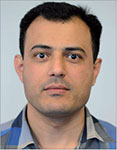Some challenges in hydraulic fracturing of tight gas reservoirs: an experimental study
Vamegh Rasouli A , Mohammad Sarmadivaleh A and Amin Nabipour ACurtin University of Technology
The APPEA Journal 51(1) 499-506 https://doi.org/10.1071/AJ10033
Published: 2011
Abstract
Hydraulic fracturing is a technique used to enhance production from low quality oil and gas reservoirs. This approach is the key technique specifically in developing unconventional reservoirs, such as tight formations and shale gas. During its propagation, the hydraulic fracture may arrive at different interfaces. The mechanical properties and bounding quality of the interface as well as insitu stresses are among the most significant parameters that determine the interaction mechanism, i.e. whether the hydraulic fracture stops, crosses or experiences an offset upon its arrival at the interface. The interface could be a natural fracture, an interbed, layering or any other weakness feature. In addition to the interface parameters, the rock types of the two sides of the interface may affect the interaction mechanism. To study the interaction mechanism, hydraulic fracturing experiments were conducted using a true triaxial stress cell on two cube samples of 15 cm. Sample I had a sandstone block in the middle surrounded by mortar, whereas in sample II the location of mortar and tight sandstone blocks were changed. The results indicated that besides the effect of the far field stress magnitudes, the heterogeneity of the formation texture and interface properties can have a dominant effect in propagation characteristics of an induced fracture.

Vamegh Rasouli is an associate professor at the department of petroleum engineering. He is a Chartered Professional Engineer (CPEng) and is a registered engineer with the National Professional Engineers Register (NPER) of Australia. After completing his PhD in 2002 from Imperial College, London, Vamegh took up the position of assistant professor in the department of petroleum engineering at Amirkabir University of Technology (Iran). In 2006 Vamegh joined the department of petroleum engineering at Curtin University to support the delivery of the department’s master of petroleum well engineering—and to carry out research in his specialist area of wellbore stability, sanding, hydraulic fracturing, etctera. He established the Curtin Petroleum Geomechanics Group (CPGG); it has completed number of successful research and consulting projects. He now supervises six PhD students and numerous master students. Vamegh has also been a consulting engineer on various geomechanics-related projects with Schlumberger’s Data and Consulting Services (DCS) in Perth. v.rasouli@curtin.edu.au |

Mohammad Sarmadivaleh is a PhD candidate at Curtin University of Technology, Perth. He is working on a numerical and experimental study of the Interaction of an induced hydraulic fracture with a natural interface. Mohammad holds a bachelor of science in petroleum engineering (reservoir engineering), a master of science in drilling and production engineering from Petroleum University of Technology (PUT), Iran and a master of engineering in petroleum well engineering from Curtin University of Technology. mohammad.sarmadivaleh@postgrad.curtin.edu.au |

Amin is a PhD candidate in the Department of Petroleum Engineering at Curtin University, Perth. His research focuses on numerical and experimental ultrasonic monitoring of fracture propagation. He received his bachelor of science in mining engineering from Isfahan University of Technology (IUT) in 2006 with a thesis focused on the drilling bit performance in horizontal drilling. In addition, he holds a master of petroleum well engineering from Curtin University of Technology and a master of science in petroleum production and drilling engineering from Petroleum University of Technology (PUT), Tehran (2008). In his master's thesis, he conducted a research on the stress analysis of cement sheath using finite element method (FEM). amin.nabipour@postgrad.curtin.edu.au |


